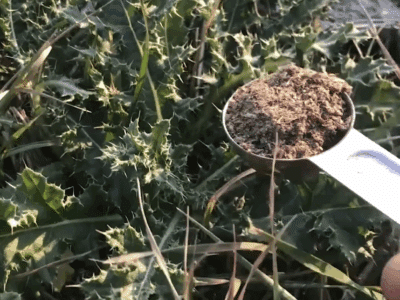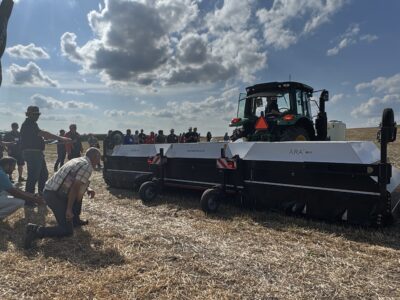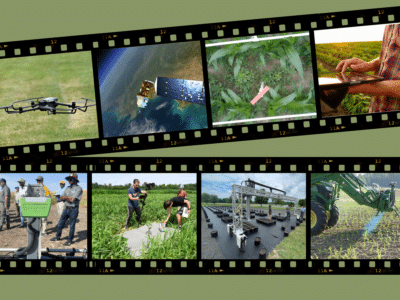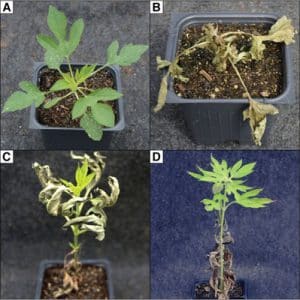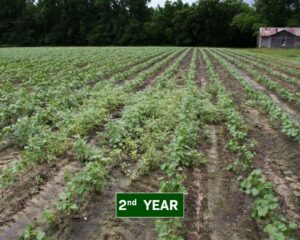Farmers can use cover crops for many benefits including weed suppression. But first, they have to make sure another popular weed control tool – herbicides – doesn’t interfere. That means farmers need to make decisions regarding their cash crop management when adding a cover crop into the rotation
Dr. Mark VanGessel, an Extension weed management specialist at the University of Delaware, provided insights in a recent webinar on what farmers should consider to help their herbicide program and cover crops play nicely together. The webinar, “Cover Crops and Herbicide Issues,” is part of a series hosted by the Northeast Cover Crops Council.
VanGessel covered three main points: The types of herbicide used during the cash crop season need to be considered; soil type and texture will also affect herbicide performance; and when cover crops are used for grazing or haying, herbicide type and application timing are important.
You can view the webinar below. Want more details on its content? Read on!
Residual Herbicides Affect Cover Crops
The amount of cover crop biomass, or aboveground plant growth, directly relates to the number of weeds in a field, VanGessel says, so a good cover crop establishment in the fall for biomass production is valuable. Biomass amounts can be influenced by soil fertility, cover crop planting date and seeding rates, environmental conditions and herbicide carryover.
“Herbicide carryover can damage the subsequent cover crop,” he says, “and the damage can range from leaf injury to plant death. Carryover could reduce cover crop plant vigor and reduce early-season biomass development.”
Most preemergence herbicides are active long enough for the cash crop to get to canopy closure but will not be present in the soil by cover crop planting time, he explains. But herbicides applied postemergence may have residual properties that linger in the soil at the end of the season. Farmers need to know what residual active ingredients they may be using in their post-applications and should read labels carefully to ensure the herbicide won’t still be present in the soil at cover crop planting time, when it could impact fall cover crop growth.
Soil Texture and pH Influences
VanGessel explained how different factors can affect herbicide degradation, which can change how long the herbicides will be present in the soil. Beyond application rates and timing, soil texture, pH and organic matter can all affect herbicide persistence and carryover.
“Medium and fine-textured soils with organic matter amounts above 3% increase the risk of herbicide carryover,” he says. “In these soil textures, more herbicide is bound to the soil particles, which can then move off later in the year and injure the cover crop.”
Soil pH also can affect certain herbicides and their risk of carryover, particularly triazines and sulfonylurea, which are influenced by higher pH soils. These herbicides don’t break down as rapidly in higher pH soils, which can increase carryover risk.
Cover Crop Varieties vs. Herbicides
Some cover crop species are more sensitive to specific herbicide active ingredients than others. For example, clovers and radishes are highly sensitive to atrazine, mesotrione and chlorimuron, but winter grains and grasses are more tolerant of these herbicides. VanGessel suggests that farmers find the right combination of herbicide and cover crop variety that will allow both to perform best.

Farmers need to follow label directions at all times, but be especially aware when using cover crops for grazing or hay. Herbicide residuals can end up in the cover crop and be ingested by livestock. VanGessel gave the example of Zidua (pyroxasulfone), which has an 11-month plantback restriction before small grains other than wheat.
Cover crops and herbicides can be used in tandem for weed control, but they both need proper management for each to perform to their utmost in a field.
To view this webinar, as well as the others in this series, go to: https://www.uvm.edu/extension/nwcrops/conferences-events-current-and-past.
For more information on using cover crops for weed suppression, see this GROW webpage.
Article by Carol Brown
